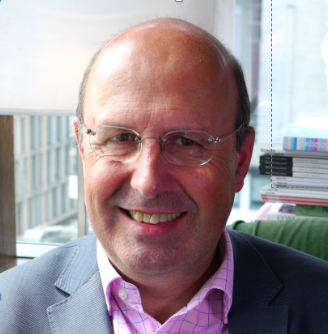You can sign up to our LinkedIn newsletter here.
As a Portfolio Executive you will have a level of confidence in your professional skill, wisdom and insight that you bring into the role as a trusted advisor to your clients. You may often believe that your client is less expert than you in the field that you’ve chosen. You don’t think your client is doing the very best job they could. They’re making unnecessary mistakes. This may very well be true. Often it is true! But, as a Portfolio Executive, you need to find the humility to accept that you can get things wrong as well; to recognise there are things you don’t know or fully understand; to accept that the needs of your client will evolve over time. Crucially, you could lose track of what’s important to them as their business and their ambitions evolve. It is therefore essential, both to solicit client feedback and to respond to it.
Criteria for Excellence
I often encourage the people I work with to establish early in the relationship a set of criteria for what the client believes excellence looks like. They may well have priorities that don’t necessarily resonate strongly for you. So let me give you a few examples: clients may care much more than you do, that things are done on time. On time is on time as defined by the client. This can often mean in advance of the time when it’s strictly necessary because they want confidence that it will happen.
It may be that for a client the quality and frequency of communication is critical. They don’t like surprises. They need to have their expectations managed. They want you to be looking further ahead than they can at what is just over the horizon.
Sometimes it’s about the detailed quality of your work. I’ve known clients who seem to be unnecessarily petty about spelling and punctuation or small errors in a presentation. You may take the view this doesn’t really matter in the grand scheme of things, but for them this is an important indicator of your commitment to the relationship.
Missing Changes in Client Need
But often the biggest risk for a Portfolio Executive, who is well established in a client relationship, is failing to notice that the needs of the client are evolving and changing. Let me give you an example in the realm of the Portfolio HR Director. You’re a Portfolio HR Director for a knowledge-based organisation. You’ve been with them for three or four years. You’re confident that everything is in a good place: the recruitment processes are working; the reward structures are in place; there’s a learning and development programme; staff morale is okay, salaries are benchmarked to market. What you have missed is that the client doesn’t feel that you’re making a difference. The fact that there’s no crisis and everything is okay is not enough anymore. They want to understand how you’re going to continue to add value. They will express that disappointment by perhaps limiting your involvement in senior management, or querying your hours, or challenging your fee rates, or having a reluctance to accept your inflation-based fee increases. If you were actively soliciting feedback, actively looking at what’s important to the client, noticing how that’s changed over time, you could expect to be forewarned.
Dealing with Client Disappointment
The most damaging challenge to your long-term relationship is when you do some work for a client and there are all sorts of aspects of it that they don’t like, don’t understand or don’t agree with. Now you need to dig deeper and understand what’s really going on. There is a great guide from the book ‘The Five Languages of Apology’ by Dr Gary Chapman and Dr Jennifer Thomas.
- I’m Sorry: your client will want to know if you understand how deeply your behaviour has disappointed them. You need to say you are sorry and what specifically you are sorry for. You need to show remorse, not just be sorry you got caught.
- I was Wrong: your client wants you to accept responsibility for what you did or said and acknowledge that it was wrong. Name your mistake and accept fault.
- Please Forgive Me: those are the words they want to hear. Requesting forgiveness is the way to show humility and express your need to restore the relationship. It must feel sincere to them. You need to be patient. They may need some time or greater clarification.
- I’ll try Not to Do it Again: your client wants to hear your desire and plan to change your behaviour, otherwise you haven’t truly apologised. Nothing else seems sincere. This is not the time to offer excuses.
- What can I Do to Make it Right? your client wants to know that they are still important to you. What debt do you owe? What amends can you make? How are you going to make restitution?
A fully expressed apology however, can only hope to bring you back from minus to zero.
Use their disappointment as an opportunity to do a complete review of the relationship. Has what they are looking for changed? What do they want to be different? Is it time to delegate more of your activity to team members, step back another level and reduce your hours? Is there a strategic initiative that the organisation needs that you’ve missed but you really ought to be addressing? Has the organisation got to a stage where the right thing for them to do is to have a full-time executive in your role and for you to look to become a non-executive? Has the team in the function that you’re responsible for got a little bit lazy, a little bit complacent? They think they’re doing good job and you think they’re doing good job. But they’re not committed to the continuing change and improvement that justifies your Portfolio Executive role?
Avoiding the Arrogance Trap
I recommend that you actively plan a regular review with your client. You need to take the attitude that you are re-pitching your assignment and your engagement with them at least once a year. It may be something that you do at the beginning of the annual budget cycle as they’re starting to think about their plans for the next year. Perhaps its something you do after the year end when they’re looking at the last year’s results. Take the same kind of care as if you were seeking to win a new client for the first time. Demonstrate your credentials, reminding them of what change you have already made and how this has increased income, reduced costs and enabled better management of risk: test the value of everything you have done. Look forward: from your rich understanding of the organisation consider how you can create new value to support the strategy of the organisation and ambitions of the leader. Consider not just the CEO but other stakeholders: executive colleagues, external advisors, non-executive board members, shareholders, regulators. If you can demonstrate you can deliver even more value, look to increase your fees. If there is less value to offer, reduce your days. Remember, key benefits of the Portfolio Executive workstyle are limiting the number of new clients you must acquire each year and positioning yourself to transition to a non-executive role in due course.

Charles McLachlan is the founder of FuturePerfect and on a mission to transform the future of work and business. The Portfolio Executive programme is a new initiative to help executives build a sustainable and impactful second-half-career. Creating an alternative future takes imagination, design, organisation and many other thinking skills. Charles is happy to lend them to you.
